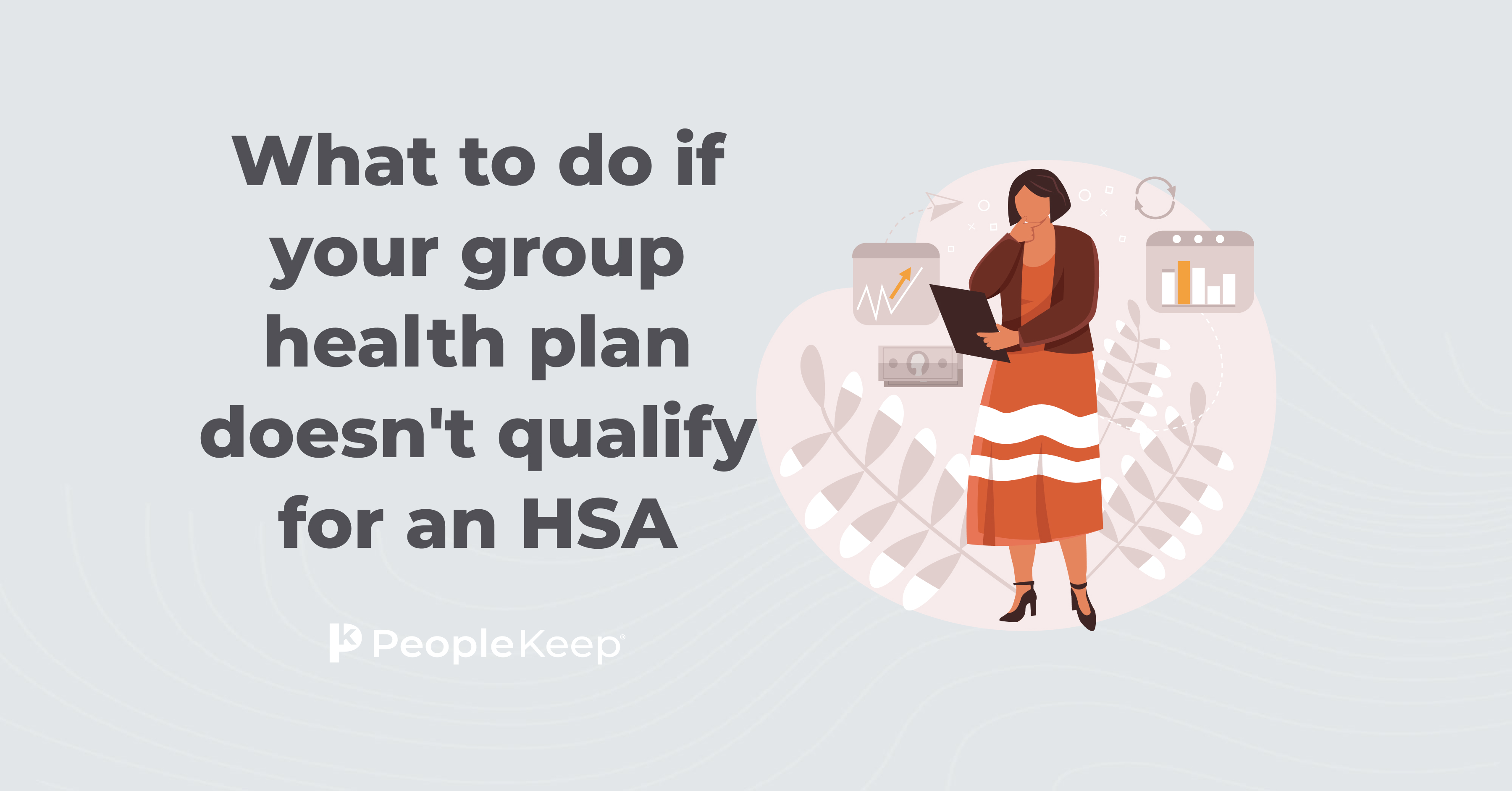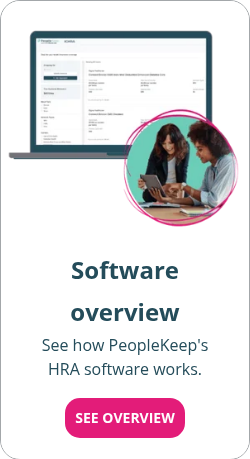Pros and cons of stand-alone HRAs
By Elizabeth Walker on January 29, 2024 at 8:00 AM
Designing an affordable and attractive benefits package is challenging for many employers. But, rising healthcare costs and participation requirements can make group health insurance inaccessible for many small to midsize business owners. These reasons and more have helped health reimbursement arrangements (HRAs) rise in popularity.
An HRA is an employer-funded benefit allowing employees to receive tax-free reimbursements for qualifying out-of-pocket medical costs. Depending on the type of HRA an employer offers, this can include health insurance premiums. While some HRAs integrate with group plans, stand-alone HRAs are for employers seeking an alternative to group health insurance.
Before deciding if a stand-alone HRA is right for your organization, you’ll need to weigh the pros and cons. This article will walk you through what stand-alone HRAs are, including their benefits and potential downsides, so that you can make an informed decision for your business.
Takeaways from this blog post:
- Stand-alone HRAs are an alternative to traditional group health plans, offering employers more control and flexibility in designing their benefits packages. They also come with tax advantages for employers and their staff, making them more affordable while keeping your employee retention rate high.
- Switching from a group health plan to a stand-alone HRA may require a learning curve for employees, especially when shopping for an individual health insurance policy. But, using HRA administration software and working with a broker can help alleviate frustrations.
- Coordinating premium tax credits with stand-alone HRAs can be challenging, but understanding affordability can help employees maximize their benefits.
What is a stand-alone HRA?
Stand-alone HRAs are a type of HRA that doesn’t integrate with group health insurance. Employers opt for a stand-alone HRA because they’re an affordable coverage alternative to group plans. Depending on which stand-alone HRA you offer, it may come with a maximum contribution limit and company size requirements.
Outside of not working with group health insurance, stand-alone HRAs work the same as other HRAs. Employers choose a set monthly allowance to offer their employees. From there, employees purchase their preferred healthcare items and services. Once your employees provide documentation of their purchase, and you verify and approve the eligible expense, you reimburse them tax-free up to their allowance amount.
The following are the two most popular stand-alone HRAs:
- Qualified small employer HRA (QSEHRA): A QSEHRA is for small employers with fewer than 50 full-time equivalent employees (FTEs). The IRS sets annual maximum contribution limits, but the QSEHRA has no minimum limits. Full-time W-2 employees are automatically eligible to participate in the benefit. Part-time workers can also participate if you offer them the same allowance as your full-time employees.
- Individual coverage HRA (ICHRA): While similar to the QSEHRA, the ICHRA is available to employers of all sizes and has no minimum or maximum contribution limits. Employers can also vary allowances and eligibility by employee classes. Employees can opt in or out of an ICHRA, depending on affordability. If they opt-in, they must have a qualified form of individual health coverage to receive reimbursements.
With PeopleKeep, unused funds don’t roll over annually. However, funds do accumulate by rolling over from month to month.
Pros of stand-alone HRAs
A stand-alone HRA is a popular option among employers for several reasons. Let's look at four of their key benefits below.
1. They’re flexible
One of the main advantages of stand-alone HRAs is their flexibility. Whether you offer a QSEHRA or an ICHRA, you can design these employee benefits to meet your needs. For example, you can set the allowance amount that works for your budget and choose what qualifying medical expenses are eligible for reimbursement. For example, you can choose to reimburse employees for their insurance premiums only or also allow them to submit out-of-pocket expenses.
If your budget or needs change, you can make plan design alternations before your benefit renews at the plan year's end.
Additionally, HRAs don’t have minimum participation requirements, unlike group health insurance. As long as you have at least one W-2 employee, you can offer a stand-alone HRA.
The flexibility also extends to employees. With a stand-alone HRA, you don’t choose a health insurance plan for your staff. Instead, each employee purchases and enrolls in their preferred individual health policy. Your employees can pick the insurance carrier and plan type that best meets their needs, and you reimburse them for their individual health insurance premium costs.
2. They give you more control
Stand-alone HRAs are employer-owned and funded, offering greater control than other health benefit options. Once you set your monthly allowance amount, your employees can’t exceed it. HRAs aren’t pre-funded benefits, like health savings accounts (HSA), so you only pay out reimbursements when your employees submit proof of a qualified purchase. Unused funds stay with you when an employee leaves your organization.
There are a few ways you can design stand-alone HRAs to give you even greater control. With a QSEHRA, you can offer different allowance amounts based on family status and choose to include part-time employees. But remember that you can only contribute as much as the annual limit allows.
If you offer an ICHRA, you can vary your allowance by employee classes. For example, you can set different allowances for your full-time and part-time employees or only offer the benefit to your hourly employees. You can also differ allowances based on your employees’ age and family status. And because ICHRAs don’t have annual limits, you’re in total control of your budget when deciding how much to contribute.
3. They have tax advantages
Stand-alone HRAs are pre-tax benefits, meaning that your HRA contributions use pre-tax dollars. Employers can deduct HRA reimbursements as a business expense and exclude FUTA, FICA, and payroll taxes. These tax breaks can make HRAs more affordable for small to midsize business owners who may already be on a tight budget.
There are also tax benefits for employees. If an employee has an individual health plan that meets minimum essential coverage (MEC), their HRA reimbursements will be exempt from income taxes. That means you won’t need to report their reimbursements as taxable income on their W-2s at the end of the year, reducing their overall tax liability.
4. They help you attract and retain employees
Having a comprehensive health benefit remains a top priority for employees. Because stand-alone HRAs are more affordable for many small business owners, they allow you to promote having a health benefit in your job description when recruiting employees, improving your hiring efforts.
Group health insurance lumps all your employees into one box. But today’s employees are diverse and expect customization to convince them to stay at your company long-term. With a stand-alone HRA, eligible employees can shop for their own qualified health plan through a broker, insurance carrier, or a public exchange. This way, they’ll have the network and doctors they want and can use their HRA funds to pay for the out-of-pocket costs they need.
And because their health insurance isn’t tied to employment, they can keep their plan if they leave your organization.
Lastly, employees with family coverage can submit their eligible dependents’ qualifying medical expenses for reimbursement with a stand-alone HRA. With the cost of medical care continuing to rise, this is a significant feature you can highlight for your employees to boost your recruitment and retention efforts.
Cons of stand-alone HRAs
We've covered many pros of stand-alone HRAs. But considering the cons can help you decide if this type of health benefit is right for you. Let's look at four potential downsides of stand-alone HRAs that you can consider before implementing one in your organization.
1. You can’t integrate with group health insurance
Stand-alone HRAs are for employers who don’t offer or want traditional group health insurance. To participate in an ICHRA, employees must have individual health insurance coverage or Medicare Parts A and B or Part C. While you can offer an ICHRA and a group plan, you can’t offer the benefits to the same employee class or give employees a choice between the two.
You can’t offer a QSEHRA alongside a group plan. Employees can participate whether they have individual health insurance coverage, a traditional group health plan from their spouse’s or parent’s employer, or a medi-share healthcare solution. However, only current employees and dependents with MEC can receive tax-free reimbursements—employees without MEC must pay taxes on their HRA reimbursements.
If you’re sure you want to offer group health insurance at your organization, you have other options. You can supplement your group plan with an integrated HRA, HSA, flexible spending account (FSA), or health stipend. You can also offer an ICHRA to only your employees who don’t qualify for your group plan.
2. Not all business owners can participate
HRAs are generally for the benefit of the employees. But that doesn’t mean business owners don’t want financial assistance with their medical expenses. Depending on how they file business taxes, some business owners may be unable to participate in an HRA.
C corporation owners can participate in HRA and receive tax-free reimbursements. But, sole proprietors, S corporation shareholders, and partners aren’t eligible to participate. While this may seem like a disadvantage for these employers, a special rule creates a loophole.
If the sole proprietor or partner’s legal spouse is a W-2 employee of their business, they could access their spouse’s HRA allowance as an eligible dependent. In this case, all reimbursements would be tax-free to the sole proprietor (or partner) and their spouse.
3. There’s a learning curve
One of the benefits of group health insurance is that most employees are familiar with it. If you’re considering switching from group health plan coverage to a stand-alone HRA, your employees may experience a steep learning curve.
Shopping for individual coverage, navigating the Health Insurance Marketplace, and learning how to submit documentation for HRA reimbursements can leave your employees feeling frustrated at first. Similarly, employers must administer their HRA instead of relying on an insurance company to manage their group plan. These changes can make employees and employers hesitant to switch, even with all the pros of stand-alone HRAs.
To alleviate these issues, have your employees work with an insurance broker or benefits specialist for assistance when enrolling in a new health insurance policy. You can also use HRA administration software to help you educate, train, and support your employees with their new benefits to eliminate frustration and keep morale high.
Good HRA administration software will also help you reduce the most time-consuming tasks of managing your benefit, such as storing documentation, staying compliant with HIPAA and privacy laws, and creating legal plan documents.
4. Premium tax credit coordination can be challenging
Premium tax credits are an excellent way for your eligible employees to receive affordable health insurance through the federal Marketplace. While the QSEHRA and the ICHRA can coordinate with premium tax credits, it can be confusing for employees to know how to do this if they’re new to HRAs. Let’s briefly look at each stand-alone HRA option below.
Premium tax credit coordination depends on affordability. For 2026, the IRS considers an ICHRA affordable if the employee doesn’t pay more than 9.96% of their household income for the lowest-cost silver plan premium on the Marketplace minus their ICHRA monthly allowance.
If an employee’s ICHRA allowance is affordable, they can still opt out of their ICHRA benefit. But, they can’t claim their premium tax credits. So, in this case, it’s better if they opt in to the ICHRA. If their ICHRA is unaffordable, they can opt out of their ICHRA benefit and receive their premium tax credits.
Similarly, a QSEHRA is affordable if the employee doesn’t pay more than 9.96% of their actual income for the second-lowest-cost silver plan premium minus their QSEHRA monthly allowance.
If their QSEHRA is affordable for a particular month, they can’t collect that month’s credits. They can collect their tax credits if their benefit isn’t affordable for one or more months and are eligible to receive them. But, they must reduce their credit by their QSEHRA allowance amount. Unlike the ICHRA, employees can’t opt out of a QSEHRA.
Conclusion
These days, small business owners have more options for health benefits other than enrolling in a group health plan. With a QSEHRA or ICHRA, you can offer your employees a personalized health benefit that doesn’t break the bank. Better yet, the flexibility of an HRA improves your company’s chances of attracting and retaining talented workers in a competitive market.
If you want to offer a stand-alone HRA benefit to employees but want to avoid the hassle of self-administration, consider using HRA administration software. At PeopleKeep, we can help you compliantly manage your personalized health benefit in just minutes each month, giving you more time to run your small business.
Schedule a call now with one of our personalized benefits advisors to get started!
This article was originally published on April 14, 2020. It was last updated on January 29, 2024.
Check out more resources
See these related articles

HRAs and W-2 annual reporting
Learn about HRA W-2 annual reporting requirements. Understand what employers need to include on employees' W-2 forms for HRA compliance.

What to do if your group health plan doesn't qualify for an HSA
If your group health plan isn’t HSA-qualified, explore HSA alternatives that still offer tax advantages and help employees manage healthcare costs.

How to calculate FTEs to determine ALE status
Learn what a full-time equivalent employee (FTE) is, what your FTE number means if you’re an ALE, and how to calculate how many FTEs you employ.



